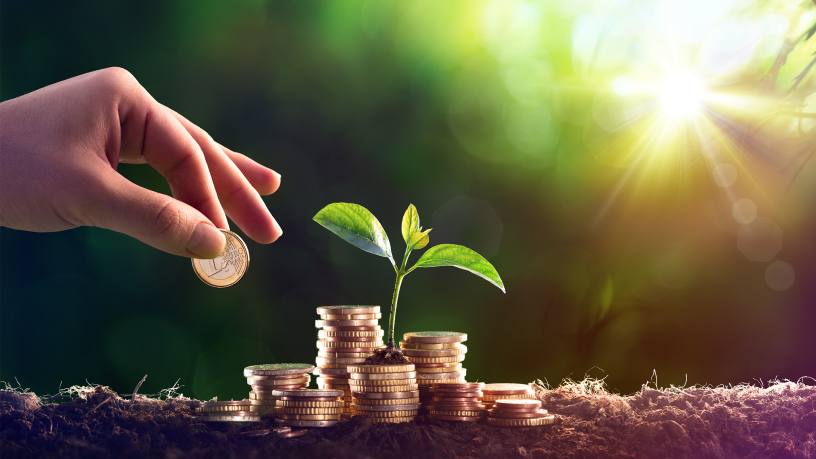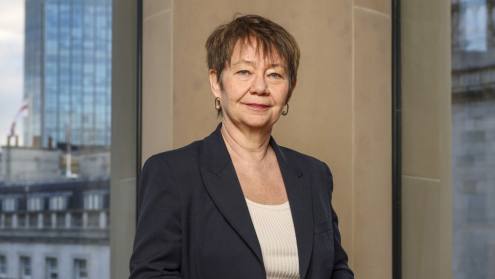Another year, another UN climate change conference – but finance remains misaligned with climate goals, experts say, following the COP27 meeting in Sharm el-Sheikh.
This comes at the expense of developing and emerging countries, which are hit hard by climate disasters and at risk of being left behind, an Asian Infrastructure Investment Bank (AIIB) report reveals.
“One of the key messages from COP27 was the recognition that the current global financial architecture is not fit for purpose,” says Nick Robins of the Grantham Research Institute on Climate Change and the Environment, after attending the conference. According to him, flows from climate finance are still insufficient.
The industrialised countries broke their promise of providing $100bn of annual funding for developing countries by 2020, which has undermined trust. “In the big scheme of things, the $100bn is tiny compared with Organisation for Economic Co-operation and Development income levels. The current projection is that this promise will be met in 2023,” says Mr Robins, who focuses on sustainable finance.
The net-zero investment for developing economies would have to grow by as much as eight times, he adds.
Developing countries such as Pakistan have historically contributed little to global warming, yet they suffer most from climate disasters. Poor countries have been pushing for decades for rich nations to compensate them for damages from floods and droughts. Such a 'loss and damage fund' was struck at COP27, a key action to prevent those countries from being left behind, according to Mr Robins.
Locked out
Developing countries also face the risk of being locked out of key markets if green technology and finance are not traded equitably, warns the AIIB report.
The report reveals that state-owned banks and enterprises in the developing world have a greatly oversized footprint compared to their private counterparts. If those organisations do not accelerate the phasing out of fossil fuels, they could be left with assets that are no longer commercially viable due to changes in the price of greenhouse gas emissions.
“I’m not suggesting that banks can do an immediate switch and rule out fossil fuels altogether, as it is still needed in the transition of many developing countries. But they should check if their projects are Paris-aligned and if their plans for the future are viable,” says Jang Ping Thia, AIIB’s lead economist.
His colleague, chief economist Erik Berglof, is worried that new restrictions will disadvantage developing and emerging economies. “All countries that depend on trade with Europe, which includes several Asian countries, would be very affected by restrictions and heavy taxes on fossil fuels, depending on how exposed they are to fossil fuel-intensive activities and how flexible they are in moving to other markets,” he says.
One dimension of a just transition for developing countries is to “scale up investment flows, particularly for concessional capital which can help overcome high interest rates in local markets,” says Mr Robins. Global banks and investors would also have to avoid the “simplistic greening of their portfolios by dumping high-carbon assets or countries in the developing world”.
Although a growing number of banks and investors support a just transition, they “lack guidance on what it means in practice”, adds Mr Robins. Importantly, social dimensions need to be integrated into the plans. For example, net zero should generate new jobs – but with decent working conditions.
“This means respecting labour and human rights throughout the financing process and bringing affected stakeholders to the table from the beginning,” he explains.
Green technology
To ensure that there are enough incentives for green technologies, the AIIB report highlights the importance of carbon pricing. By removing subsidies for fossil fuels, production and consumption can be reduced while stimulating innovation in green technology.
China has emerged as one of the leaders in patent applications for green technology, especially solar, hydro, and geothermal power. But the value of these patents is low compared to advanced economies. For example, China filed almost double the patent applications for hydrogen as Japan, but the total value of China’s patents is significantly lower.
“What is striking from the data is that middle income countries and small developing economies do very little on original innovation for green technology,” says Mr Thia. To prevent those countries from being left behind, copying existing technology would be the cheapest and most effective way to decarbonise their economies.
While COP27 had a big focus on fossil fuels, Mr Robins points out that a similar just transition will be needed for agriculture, forestry, and oceans. “Here upholding the rights of indigenous peoples will be central to getting progress,” he says.
Net zero does not need to be a drag on economic development. “If we do it well, I think we’ll actually build new sectors and new jobs, and allow economies to remain competitive,” says Mr Thia.







